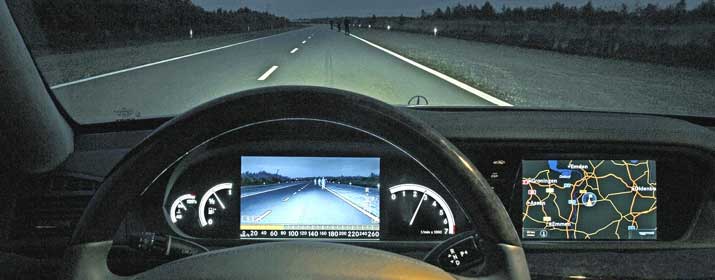| Explanation | ||
What is night vision assist and how is it worth your money? Well after surveys and studies it
was discovered that more accidents occur at night although less driving is done at night. Night vision
assist is a feature on high end vehicles that allow you to see pedestrians and hazards while you're
driving at night or any low lighting condition.
 Infrared which is the technology responsible for night vision assist is invisible to the
human eye but has a longer and wider span than your headlamps. Infrared can be broken down into
sub technologies, two of these technologies are near infrared (NIR) and far infrared (FIR).
Infrared which is the technology responsible for night vision assist is invisible to the
human eye but has a longer and wider span than your headlamps. Infrared can be broken down into
sub technologies, two of these technologies are near infrared (NIR) and far infrared (FIR).The two sub technologies have their differences as I will now explain. Near infrared can take a small stream of light and use it for it's display. It boasts of a more colourful display and it can easily distinguish hazzards that doesn't give off heat as a fallen tree or dead animal. The drawback of near infrared is it's range which can be less than 200 metres and near infrared will almost be ineffective in smoke or fog. Far infrared uses heat to detect hazards. It has a longer range of approximately 300 metres so you're able to detect pedestrians or hazards earlier. Far infrared will also have approximately the same effectiveness while driving through smoke or fog. The drawbacks will be the display which is a black and white display, not as good as the near infrared but good enough and it will not distinguish dead animals or fallen trees as easily. Night vision assist does enhance your safety while you're driving in your high end vehicle and it is known by different names by various automotive marques but night vision assist is a feature that's making its presence felt in the industry. |
| External Links |
| Detailed Explanations |
|
[?] Subscribe To This Site
|
| Random Topics |
| Other random topics of WhyHighEnd? |




